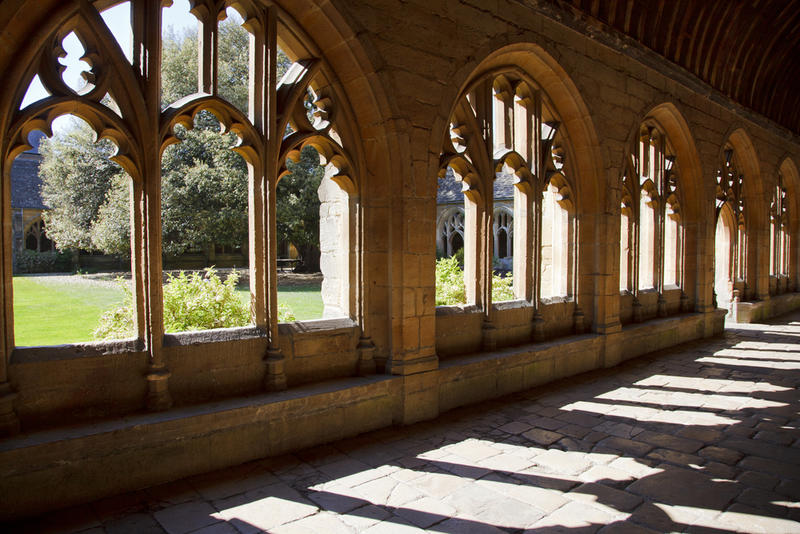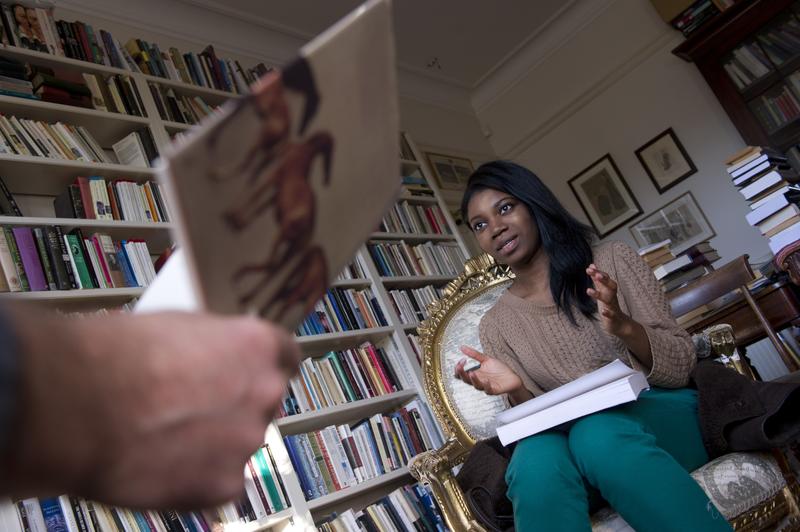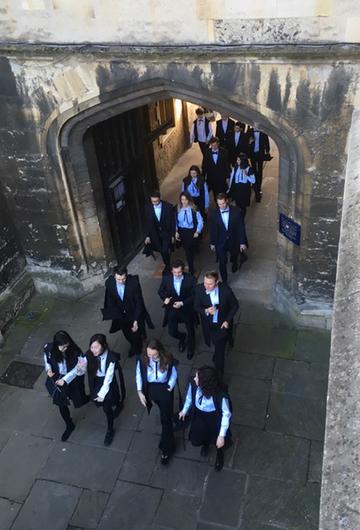The colleges and the COVID-19 impact
Miles Young, Warden of New College and Chair of the Conference of Colleges, discusses the impact of the coronavirus pandemic on college life and how the community has worked together to overcome difficulties

New College Cloisters
How have colleges been coping with the pandemic, individually and collectively?
We have 45 Colleges and Private Public Halls in Oxford and some of them were at the very sharp end when the Coronavirus struck back in March. They bore the brunt of learning how to deal with it and of handling the first cases – and they all coped magnificently. As institutions, individual colleges have proven very resilient: Governing Bodies and committees have met virtually and statutes that were sometimes devised hundreds of years ago have all been operating smoothly in a virtual world! Many college staff have continued to work, both remotely and onsite: they have shown extraordinary dedication and service.

Miles Young
In the meantime, colleges have been participating and helping lead the huge amount of work going on throughout the University for the return next Michaelmas term. We are active in the many working parties, and we are particularly grateful to the Principal of Somerville and the President of Wolfson for their leadership roles in the Michaelmas Coordination Group (MCG).
We owe an enormous amount to our staff who work in the IT departments of our colleges. They have been the bedrock of everything that has been delivered.
What surprised you the most in the way colleges responded to the pandemic?
I think it would be the way in which a whole term’s teaching switched from face-to-face to online in very short order indeed – and then the way in which it was received. Beforehand there were dire predictions about whether it would be possible, but the surveys show a very high level of satisfaction amongst students. More anecdotally, I interviewed all my own freshers individually online last term and I found them very complimentary about their tutorials. In a few cases we have had connectivity problems but we have mainly been able to overcome them. All of this, of course, simply reflects the huge amount of work which has gone on to pull it off.
What are the challenges of online teaching?
The first challenge is technology. We owe an enormous amount to our staff who work in the IT departments of our colleges. They have been the bedrock of everything that has been delivered.
I think if you were to ask our tutorial fellows they would also say two things about this style of teaching. Firstly, online tutorials require extensive preparation. It’s not the case that you can simply tune in and treat the tutorial in a normal way. At the most basic level, different teaching material needs to be prepared – but also different processes for navigating the tutorial. Secondly, they are tiring to conduct – quite simply, keeping people engaged via a screen can be exhausting, much more so than creating rapport within your own study.

An Oxford tutorial in normal times
How have students been coping?
They’ve been amazing – we should be very proud of them. Recently, the Students’ Union did a survey which showed how resourceful the students have been during the pandemic. They’ve been very communicative – 68% cited talking to friends and family as a way of coping, whilst the same number have been engaging in physical activity. Watching films, creative activities and reading were the next major activities. Of course, they are also worried – 70% have felt some kind of stress related to academic work; 60% have concerns about the future.
I think this just highlights the importance of colleges and how critical it is that we do bring students back – to the communities that give them the sense of family belonging which is what Oxford is all about.
I should add that the JCRs and MCRs have been highly inventive. They went virtual from the very beginning, not just for their meetings but to generate a whole range of activities – from weight-training to cheese tasting!
What about graduates?
The graduates, in particular, both in the graduate colleges and in the mixed colleges, have had to develop their own way of living and working in the last few months, especially as a large number of them have remained in residence in Oxford. Again, I have been enormously impressed by the way in which they have risen to the challenge, seized the initiative, created services for themselves where necessary and also looked after each other when they needed to. The graduate colleges, too, have played a slightly different role as they have had proportionally more students remaining, and they have done this with a great sense of care and concern.

Students at New College on their way to matriculation last year
What’s the saddest thing about the pandemic in terms of college life?
Undoubtedly, there are two things that are very sad.
Firstly, the finalists have left Oxford without experiencing the very special nature of their last Oxford summer: they have not been able to celebrate with friends, to say goodbye properly, to enjoy the punting and the parties. We feel for them very much and we are all planning ways in which they can, we hope, come back next year to do that.
The second is the effect on our postgraduate researchers. Often their research has been badly disrupted – they have been cut off from the libraries that contain the resources which they need, or they have been locked out of their laboratories. This is changing as fast as we can change it, but it has certainly been a cause for sadness.
Both of these things should make us reflect that however successful we may feel we have been, the pandemic has had very real costs – both emotional and practical – for our communities.
What about next term?
Well, we have been looking at bringing everyone back, and delivering as much of the Oxford experience as we can. In the colleges, it won’t be exactly the same – it will look and feel different. There will be social distancing, and we will be extremely preoccupied with the health and safety of our students and staff. That has to be our overwhelming priority, and it means that some other aspects of life will be side-lined. But it’s a pathway back to normalcy. While it will require responsibility on all sides, I am absolutely convinced that there is no better environment than the collegiate one in which to do it.
Many college staff have continued to work, both remotely and onsite: they have shown extraordinary dedication and service.
Will anything change afterwards?
Fundamentally, no. The pandemic has shown up one thing: the enormous plus of relationship-based teaching – and a comparison with other forms of higher education is, I believe, very favourable towards us. I think it also shows the value of colleges, to which students and staff are bonded, and which make any large challenge much easier to deal with.
But I do think that some of Oxford’s historic fear of technology may now be dissipated. People will realise that there are ways in which it can exist without undermining the essence of what we do – and that it should be given more credit for that in the future.
More information
Photo credit:
New College archway - Shutterstock
Photo of Miles Young - John Cairns
Traditional Oxford tutorial - Oxford Image Library


